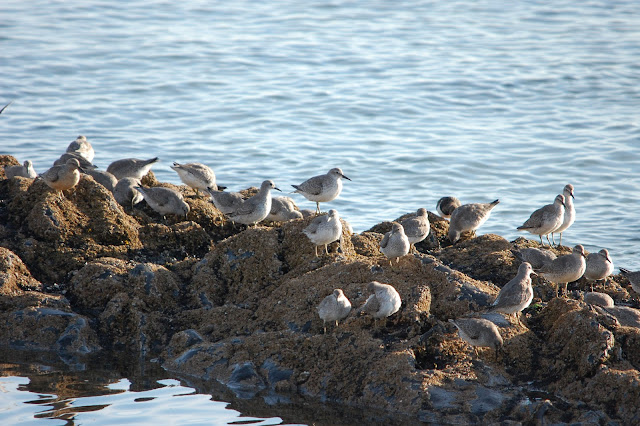 |
| Knot, similar winter plumage to Dunlin except Knots have yellow legs, are larger and have a stubbier black bill |
Portmarnock, Dublin.
This morning was our 2nd outing with Richard Collins. We met in Portmarnock and made our way along the rocks. We saw plenty of Knot, Dunlin, Ringed Plover, Turnstone, Oystercatchers and Redshanks. We also saw 3 Sandwich Terns, which are very late leaving Dublin.
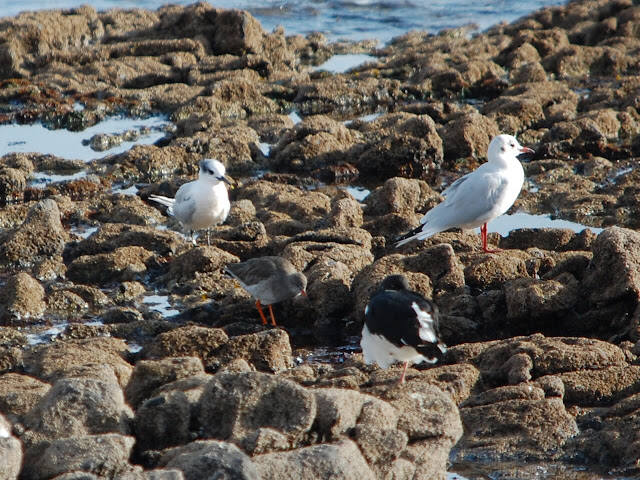 |
| Sandwich Tern (top left), Redshank (middle), back of Oystercatcher and adult Black Headed gull. | | | | | | | | | | | | | |
| | | | | | | | | | |
|
|
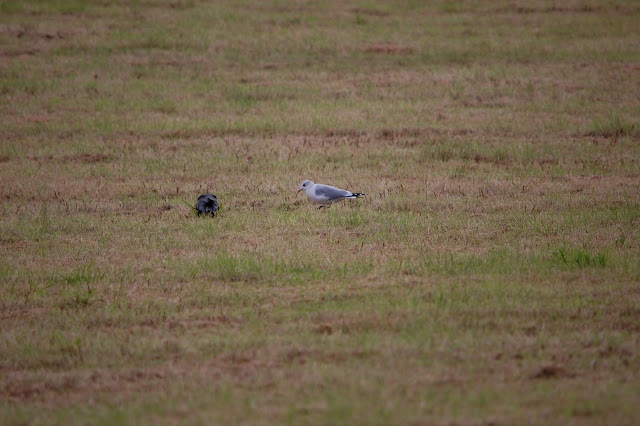 |
| Common Gull - similar to a BH Gull and Herring Gull but ... |
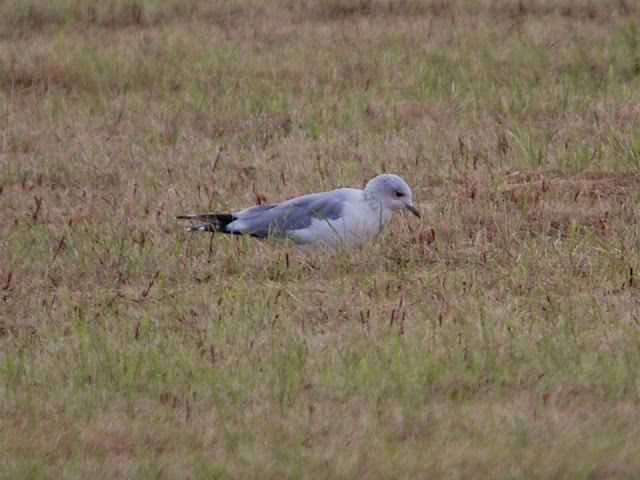 |
it has a plain head (no black spot behind the eye like a BH Gull), it's smaller than Herring Gull and black band on yellowish bill and yellow legs were seen = Common Gull.
|
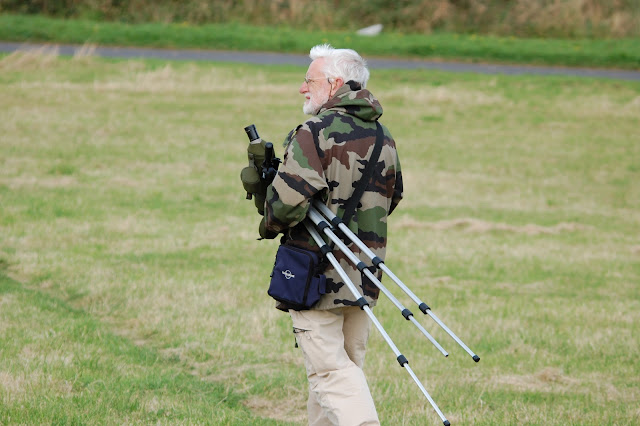 |
| 'There are only a few things you should ever worry about, everything else doesn't really matter at all', the one and only, Richard Collins. |
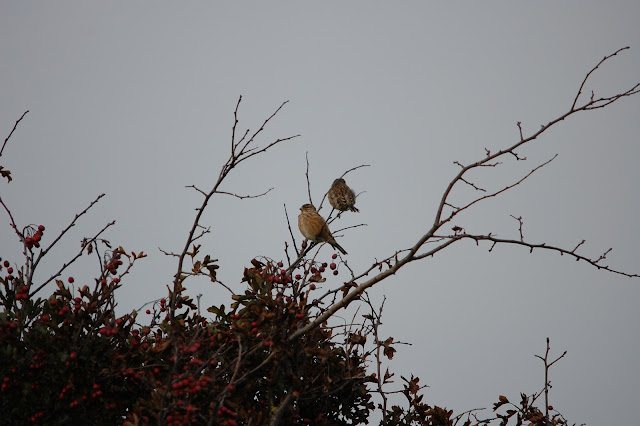 |
| We also spotted these Linnets, just out of summer plumage, still a little red sheen showing. |
 |
| and this Jackdaw fixed me with it's best blue eyed stare. |
 |
| Cormorants putting the washing out to dry. | | | |
|
Just after midday we called it a day and everyone headed off. A beautiful morning in Portmarnock, bit disappointed not to have decent photos of the Turnstone and Ringed Plover, but another time hopefully.
Yesterday I spent the afternoon volunteering for BWI at the membership stand in the RDS, not hugely my favourite thing to do, but we got loads of new members and raised much needed funds for BWI and bird conservation and when I get so much from birding it's only right for me to give something back.
I had been telling Niall (Keogh) that I was going to Portmarnock today and he suggested going up to Howth Head afterwards. That was my plan was until he texted me this morning to tell me that there was a Sharp-tailed sandpiper at Rogerstown Hide. This bird is a Mega for twitchers in Ireland and although I'm no twitcher I thought I'd head up for a look at the bird which has only been recorded 3 times in Ireland.
Rogerstown Hide, Dublin
When we (me and Susan) got to the hide, there were only another 4 people in there. Victor, Derek, Dennis and Stephen.
They were frustrated that the bird had been far up the channel out of sight for over an hour, but eventually, the bird showed and made itself known.
Here's a pic:
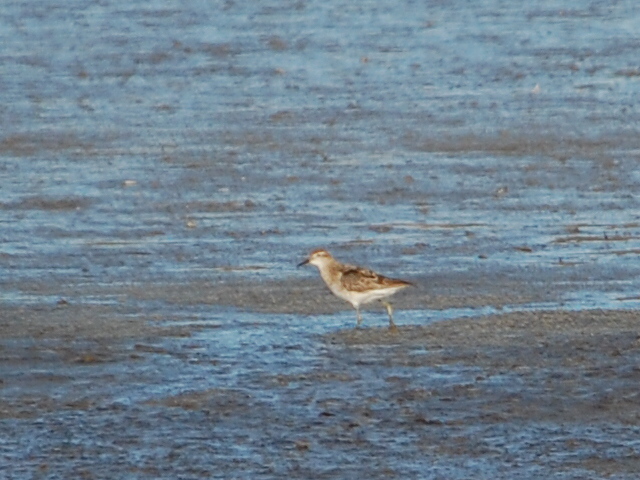 |
| What makes this different from the very similar Pectoral Sandpiper is the white supercilium and the chest is more orange. |
Many thanks to Niall for the text this morning and to the other guys in the hut for letting us tag along with them to get these views.
There's no doubt at all that it would have needed a very experienced birder to have spotted this in the first place (I'm not sure who did) and I'm a million years away from having that ability, but it was still cool to get a glimpse of the other birders getting their Mega tick. I have to admit, it didn't do anything for me personally, but I don't know that much about Sandpipers and haven't got a whole list of birds I've already seen which maybe would have made seeing a rare one a bit more exciting.
We all left after that and I drove Susan and Stephen back to Portmarnock and headed off for the last bit of sunshine to Bull Island.
Bull Island, Dublin.
I walked down the path where the Orchids grow (next to the golf club) and saw something that I did enjoy seeing, a Curlew which was seeing off another Curlew on it's territory.
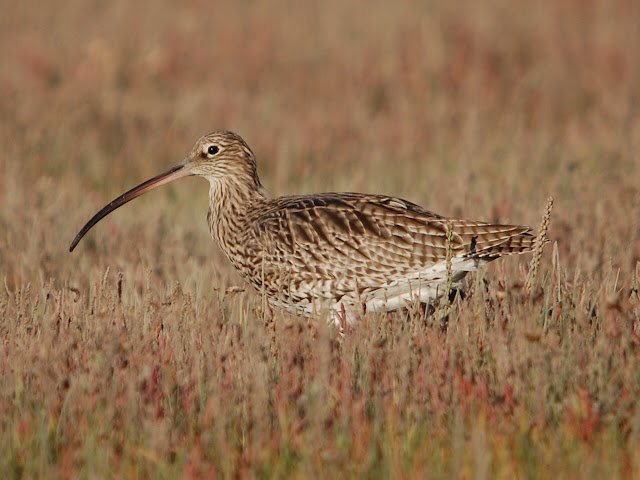 |
| Curlew, Bull Island. Just look at that plumage. |
|
 |
| 10 Brent Geese - there are 3 juveniles in this pic! Great news. |
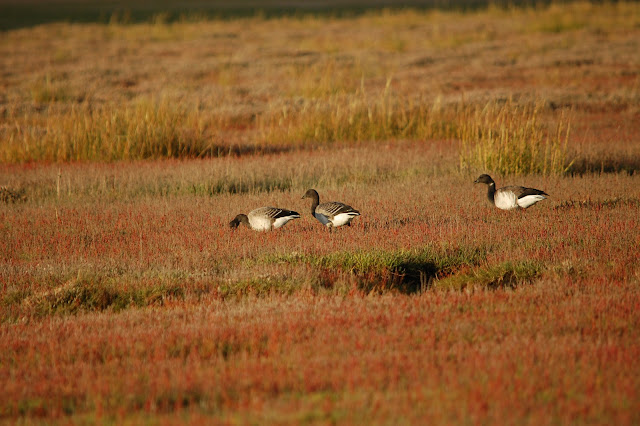 |
| Juvenile Brent Geese lack the white neck mark and have white bars on their backs. The pic shows an adult and 2 juveniles. | | | | | | | | | | | | | | | | | | | | |
|
|
I couldn't see any tags as their legs were hidden by the grass, so I headed back to the car to head home.
Before I got into the car I just crossed over the road quickly just to double check nothing else was showing on the other side of the Bull, on the path I ended up seeing this Bunting. I think it's a Reed Bunting in winter plumage but lack of black bib has had me looking at other Buntings.. but in the end I think it is a Reed Bunting.
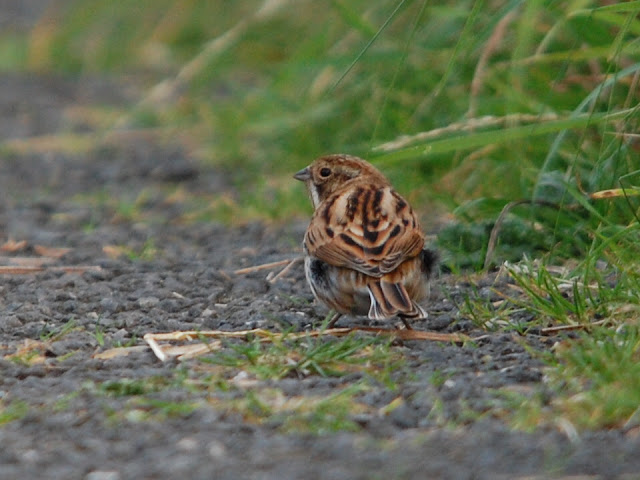 |
| A juvenile Reed Bunting would have a grey back, this clearly doesn't. |
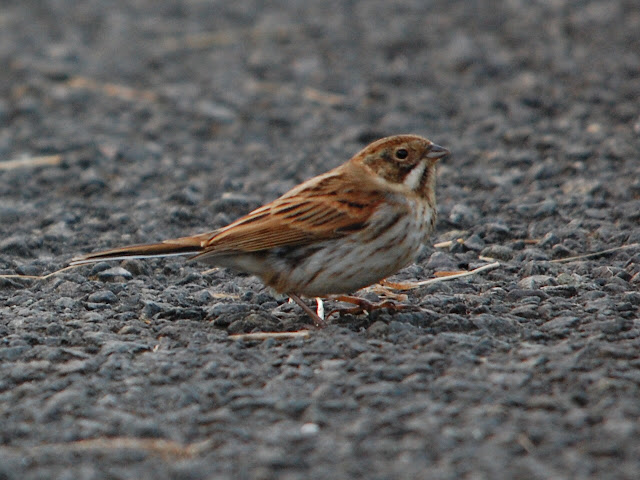 |
| I think maybe a female adult Reed Bunting. |
And with that I headed home. What a day's birding.